(VOVWORLD) - China’s Suzhou is one of the oldest cities in the Yangtze Basin dating back more than 2,500 years. As the Chinese saying states, "In heaven there is paradise; on earth are Suzhou and Hangzhou," Suzhou has become popular among Chinese people and foreigners alike from this perspective. In ancient times, Suzhou was a center of economic prosperity and cultural abundance. Let’s join Jason Liu, a blogger from Suzhou, to explore the city’s unique offerings for a once-in-a-lifetime experience.
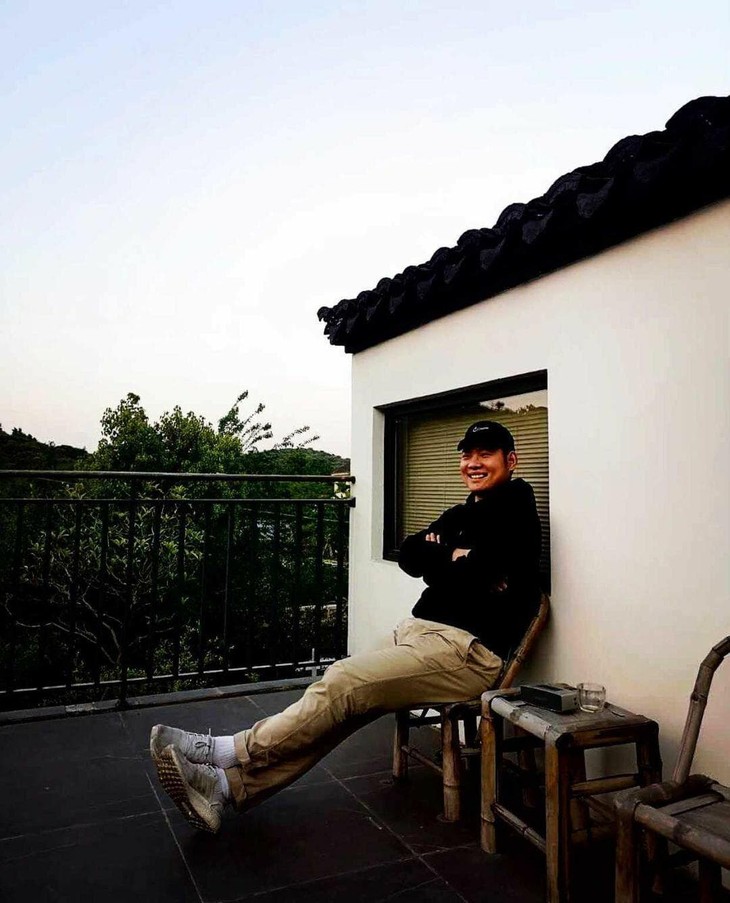 Jason Liu is a blogger of the Wechat nowadays with 0.3 million fans. He is based in Suzhou. Jason Liu is a blogger of the Wechat nowadays with 0.3 million fans. He is based in Suzhou. |
Ngoc Diep: Thank you for joining us today, Jason. So you’re living in Suzhou, an ancient city famous for many things. If you had to give a brief introduction about Suzhou, what would you say?
Jason Liu: Hello, everyone. Thank you for having me today. In a brief introduction about Suzhou, I would say it’s appeal is not its skyscrapers, expressways or supermarkets. These sights can be seen elsewhere, including its neighboring city, Shanghai, but not in Suzhou. Those who visit Suzhou marvel at its small bridges, murmuring brooks, classic gardens and water towns. With a long history, Suzhou has given birth to Gusu culture. Suzhou is the birthplace and center of Wu culture in history, consequently, all styles from garden architectures, silk embroidery and folk customs, to painting, calligraphy, seal cutting and poetry have been acquired from Gusu culture. All these illustrious cultural achievements are the historical contributions of Wu culture, it was also a special and remarkable contribution to Chinese culture.
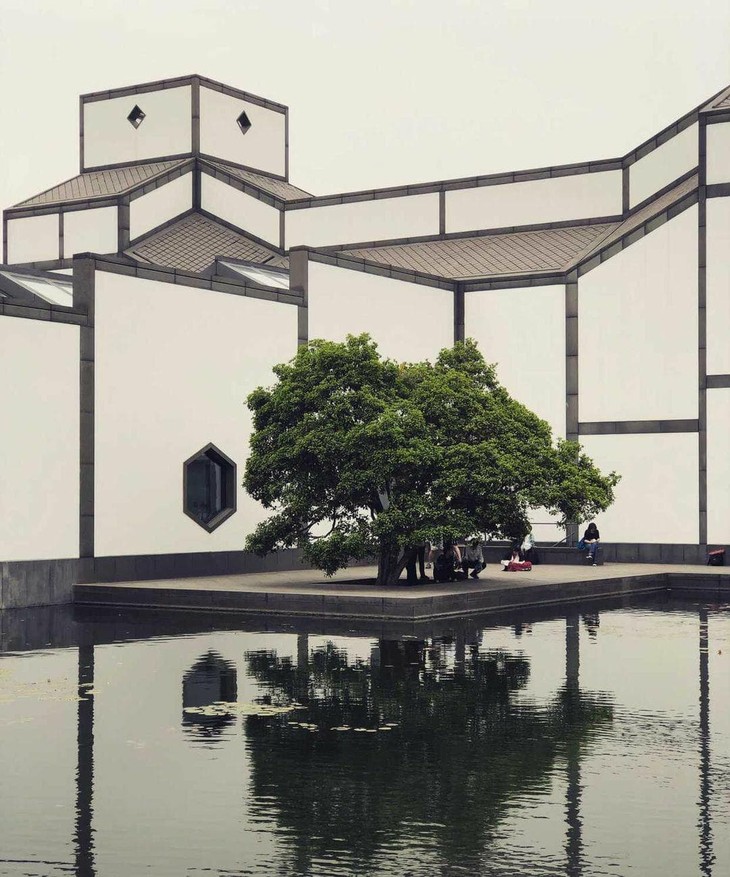 A corner in the Suzhou museum designed by Suzhou native Leoh Ming Pei. (Photo: Jason Liu) A corner in the Suzhou museum designed by Suzhou native Leoh Ming Pei. (Photo: Jason Liu) |
Ngoc Diep: You just mentioned the classic gardens, what are they?
Jason Liu: In China, gardens fall under two categories: one is the imperial garden, such as the Summer Palace (Yiheyuan) and the Garden of Perfect Splendor (Yuanmingyuan) in Beijing, and the Imperial Summer Resort (Bishu Shanzhuang) in Chengde, all of which are magnificent and imposing. The other is the private garden, like those found in Suzhou.
A Suzhou garden represents the original idea of "urban scenery." It is a microcosm of the world in one corner of the bustling city, composed of the basic elements of water, rocks, plants and buildings, arranged in such a way as to reflect the garden's sequential beauty including, the passage of time, contrast between morning and evening, and succeeding seasons.
 Canglang Pavilion, a famous garden in Suzhou. (Photo: Jason Liu) Canglang Pavilion, a famous garden in Suzhou. (Photo: Jason Liu) |
Ngoc Diep: Are there a lot of classic gardens in Suzhou?
Jason Liu: The classic gardens are a precious heritage within Chinese culture. More than 60 gardens are well preserved, and over a dozen are open to the general public, including the Humble Administrator's Garden (Zhuozheng Yuan), the Lingering Garden (Liu Yuan), the Master-of-Nets Garden (Wangshi Yuan), the Lion Forest Garden (Shizi Lin), and the Mountain Villa with Embracing Beauty (Huanxiu Shanzhuang). In December 1997, Suzhou's classic gardens were named World Heritage sites by UNESCO.
Many modern elements have been added to these gardens. For example, in the Master of Nets Garden, there will be a light show at night, and there will be many performances, including Suzhou Pingtan, Kunqu Opera and so on. In another classical garden, the Canglang Pavilion, there is also a Kunqu Opera named Six Records of A Floating Life. It is often difficult to find a ticket as it’s very popular.
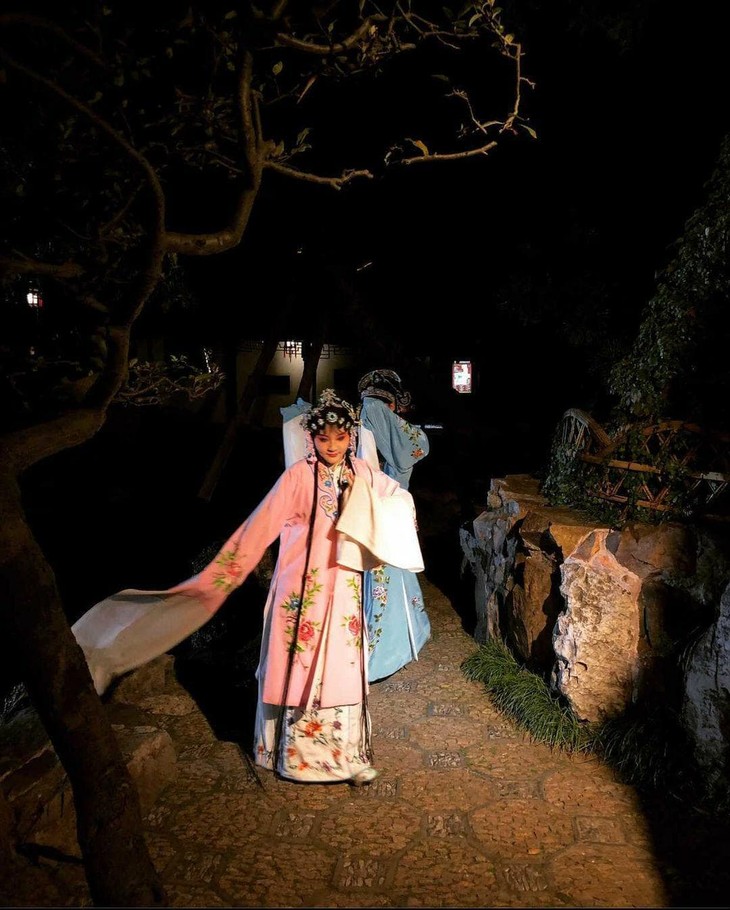 A performance at the Kunqu Opera in the Master of Nets Garden in Suzhou. (Photo: Jason Liu) A performance at the Kunqu Opera in the Master of Nets Garden in Suzhou. (Photo: Jason Liu) |
Ngoc Diep: What else can you tell us about Suzhou heritages?
Jason Liu: Well, cultural heritages in Suzhou include: Suzhou Pingtan, a general term denoting art form of “Xiaoshu” performance with storytelling in the Suzhu dialect, Clay Sculpture in Wuxi, Legend of Liangzhu, treasure of Chinese culture, is one the four Chinese folk legends, with themes of advocating pursuing knowledge, love and ceaseless life, Wood block New Year pictures of Taohuawu, which was originated from Ming Dynasty, The Dragon Boat Festival in May, which reflects the folk tradition of Suzhou in Jiangnan, Su Embroidery which was widely known in Suzhou in Jiangsu Province, and Su cuisine.
Ngoc Diep: Oh, talking about cuisine, Su cuisine is also very famous. Is it different from other regions in China?
Jason Liu: I think yes, it is. Generally, there are four types of cuisine in China; Jiangsu, Shandong, Guangdong and Sichuan cuisine that taste different to one another. There is an old saying that, "sour in the east, hot in the west, sweet in the south and salty in the north," and thus Jiangsu cuisine or Su cuisine is the "sweet in the south".
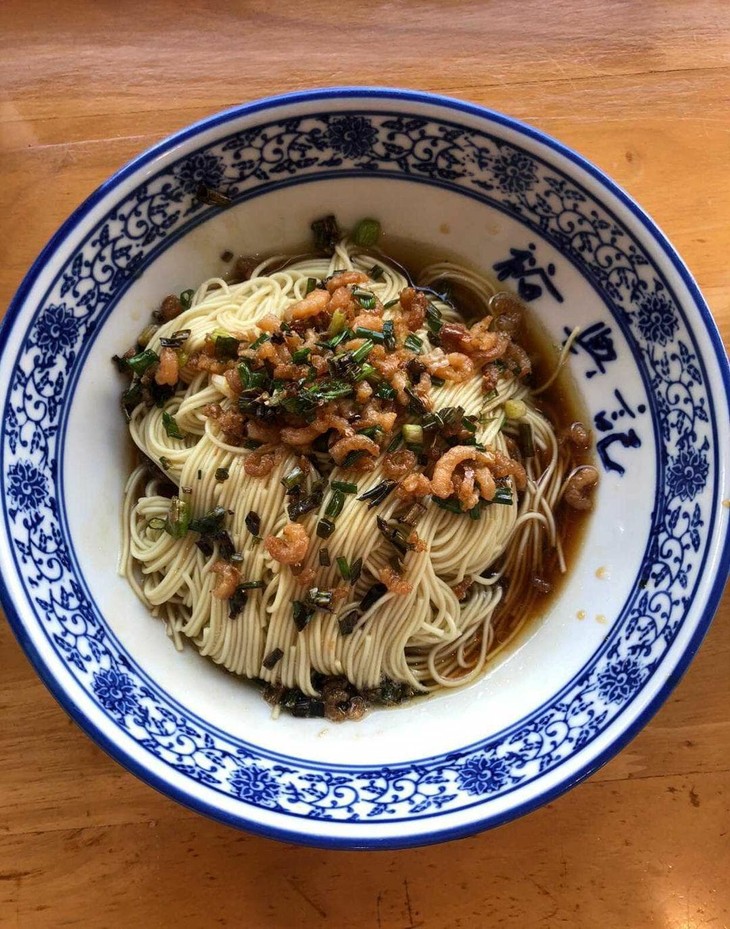 Three shrimps noodle, a popular seasonal food in Suzhou. (Photo: Jason Liu) Three shrimps noodle, a popular seasonal food in Suzhou. (Photo: Jason Liu) |
Ngoc Diep: What are some famous dishes from Suzhou?
Jason Liu: In different seasons, Suzhou has different cuisines. There are bamboo shoot soup with fresh and pickled streaky pork in spring, hairy crabs in autumn, mutton soup in winter, and three shrimp noodles in summer. You know Suzhou always is one of the richest places in the south of the Yangtze River, so the freshness of the ingredients is very important. For example, in summer, Suzhou people eat broad beans and they must pick them in the morning. If you eat screws in spring, you must eat them before Qingming Festival.
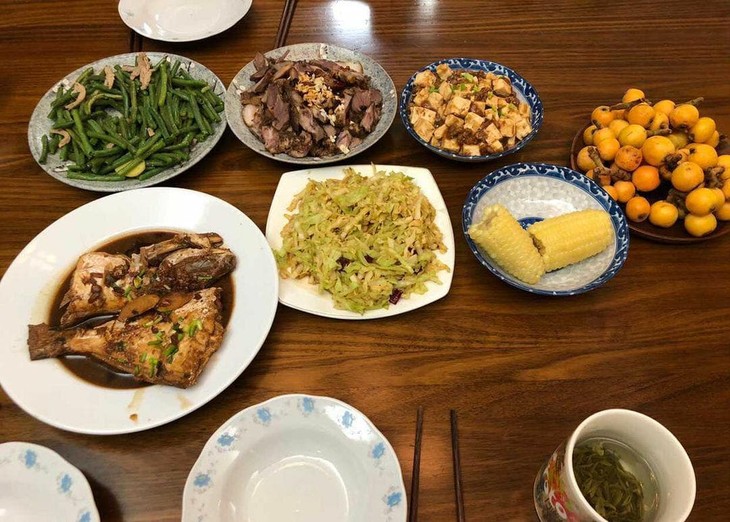 A daily family meal in Suzhou. (Photo: Jason Liu) A daily family meal in Suzhou. (Photo: Jason Liu) |
Ngoc Diep: Oh, my mouth is watering. I’ll definitely visit Suzhou for some of the best examples of classical Chinese gardens in the world, evocative canal walks, a vibrant night market, and delicious cuisine. Thank you, Jason, for your interesting talk. Wishing you all the best for the upcoming lunar New Year.
Jason Liu: Thank you for having me. Best wishes to you, too!